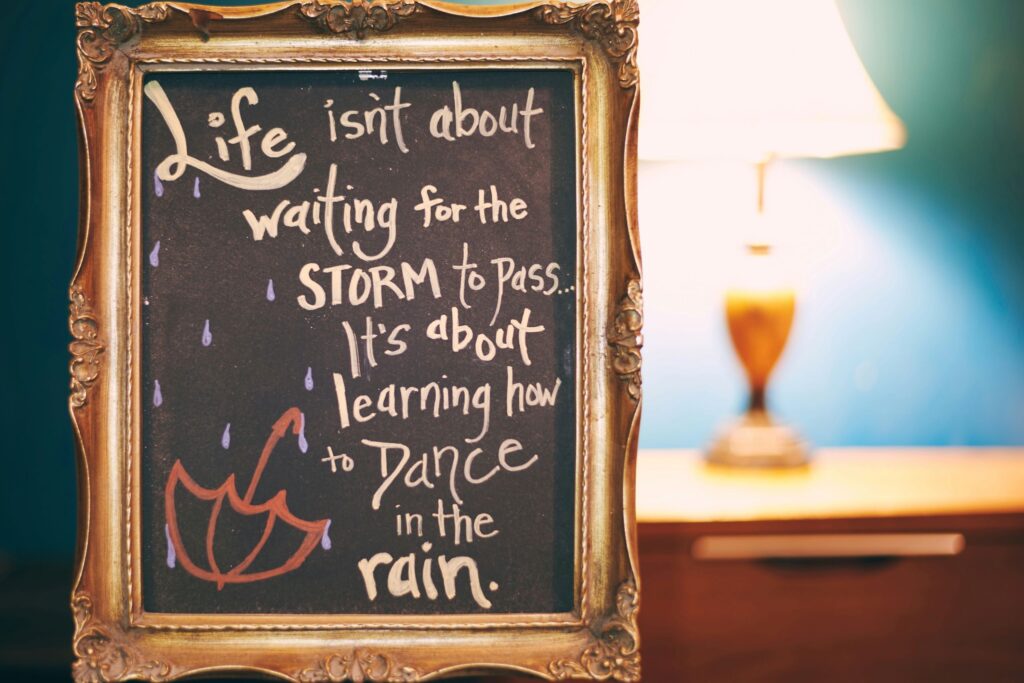Both our families live in a small town around 80 kilometers or 50 miles from where we currently live, and we visit them every alternate weekend.
But when COVID-19 hit us and the lockdown happened, we were separated from our families for months.
Since the entire world shut down, it was a time of immense stress and great uncertainty for each one of us. Every other day we would hear news about someone we knew passing away.
Social media and WhatsApp statuses were filled with messages asking for platelets or oxygen cylinders.
News channels would only show images and videos of people dying outside hospitals
Every phone call from someone in the family would make us anxious, and the first thing we would ask is if everyone is doing well or not.
Hospitals were operating beyond their capacity and doctors were working overtime. The entire healthcare sector was overwhelmed.
We would worry that if any of our family members had to be hospitalized, where would we take them? Every day was immensely stressful, but the scarier part was not knowing how long this would last.
Forget about the light at the end of the tunnel, we didn’t even know how long the tunnel was.
Offices were shut so we both were working from home.
As a result of the stressful, isolating, and fearful environment that continued for months, Pooja developed fibromyalgia. If you’ve been following us for a while, you would already know this. We’ve talked about this in a few previous blogs as well.
The doctor who diagnosed this condition told us that he’s seeing new cases of fibromyalgia every day after the lockdown.
I’m sure every person dealt with a different kind of struggle during this time. Those who lost a loved one were going through one of the darkest times of their lives.
But if you look at the other side of things, the lockdown had a very positive effect on the environment.
As we humans were locked indoors, the non-human natural world broke free.
The rivers and waterways around the world became a little cleaner, the air quality got better because of the absence of traffic pollution and smoke from factories, and the wildlife had a lot of open spaces.
At a personal level, both of us got more inclined towards healthy living because we didn’t want to go for the medicinal treatment.
Since the gyms were closed, we started going for a morning run in our local area and started exercising every evening at home using whatever weights or equipment we had.
We adopted healthy eating habits, we started drinking ash gourd juice empty stomach in the morning, included nuts and seeds in our daily diet (mainly breakfast), and completely cut down on sugar and fried food.
We also completely replaced one of our meals with raw fruits and vegetables.
Families who were living together got to spend time with each other, which would not have been possible otherwise since everyone was so busy in their lives.
We hear lockdown stories all the time from friends and distant family members about how they spent their time playing board games or watching their parents’ wedding tapes.
Towards the end, when the vaccine was developed, the lockdown was lifted, and the world opened up again, we saw a major shift in the mindset.
We came to realize the important things in life, like health, family, and social bonds. We ourselves felt this shift and started feeling grateful for the things we always took for granted.
So many people lost so much during that time, but the silver lining is that we evolved as a species.
We started focusing on the things that actually matter in our lives, and that are required of us to do together as a species to make this world a better place.

In our previous blogs of this Gratitude and Positivity series, we explored the immense benefits that this powerful emotion of gratitude has to offer.
We’ve learned how important it is to appreciate even the small good things in our lives.
Now, let’s dive into another idea that goes hand in hand with gratitude – the art of finding silver linings in challenging situations.
Gratitude has taught us to be thankful for what we have, but finding silver linings goes a step further. It’s about finding glimmers of hope, growth opportunities, and unexpected blessings within the clouds of difficulty.
When life gets hard or when we face challenges, whether in our personal or professional lives, we generally feel down or low, and negative feelings start to take over.
But by learning to find silver linings, we can face challenges with strength, hope, and a belief that things can get better.
Before we get into the idea of finding silver linings in a challenging situation, let’s first understand what is a silver lining.
Table of Contents
What Is a Silver Lining?
Suppose you lost your job for some reason. Although the work culture was very toxic and the work wasn’t of your liking, it was paying your bills and making ends meet. Initially, it would seem like a devastating blow that would cause immense stress, uncertainty, and financial strain.
But soon after, you found a job that aligned with your interest and paid more than the previous one.
Life is full of ups and downs, there will be moments of joy and there will be times that really test us. In these tough times, the concept of a silver lining emerges as a beacon of hope.
A silver lining is something good that comes out of a tough or bad situation.
Just like a glimmer of light that shines through the dark clouds, a silver lining is a glimmer of hope that shines through the dark clouds of trouble, giving us hope, helping us see things differently, and teaching us important lessons.
One key thing about a silver lining is it encourages us to look beyond the immediate discomfort or hardship we’re facing right now and see what good things might come from it.
It encourages us to shift our perspective and focus from what’s wrong to what we can learn and how we can grow from the experience.
While we now understand a little bit about what a silver lining is, it’s equally important to understand what it is not.
What a Silver Lining Is Not?
Firstly, finding a silver lining doesn’t mean ignoring or thinking little of the difficulties we’re facing. It’s not about pretending everything’s perfect or acting like the challenges don’t matter.
Instead, it’s about acknowledging the reality and accepting that things are tough while also looking for ways to learn and grow from them. It’s about finding a balance between knowing things are hard and finding ways to keep going.
Secondly, finding a silver lining isn’t the same for everyone. What feels like a silver lining for one person might not feel the same for another. Everyone’s experiences, values, and goals shape how they see and deal with tough times.
So, it’s important to keep an open mind and know that what feels like a silver lining can be different for each person.
Also, finding a silver lining doesn’t mean ignoring or pushing down your feelings. It’s okay to feel sad, angry, or frustrated when things are tough.
Being positive and looking for the good doesn’t mean ignoring those feelings. It’s about finding healthy ways to deal with them.
Lastly, a silver lining is not a guarantee that every difficult situation will have an obvious happy ending. Some situations like the loss of a loved one might not have a positive side, and that’s okay.
The real point of finding silver linings is to keep looking for ways to learn and grow, even when things seem uncertain or complicated.
Why Should We Look for the Silver Lining?
Actively searching for a silver lining can really make a difference in how we handle things. Here’s why it’s worth making a habit of looking for that silver lining:
Builds Strength
Actively seeking silver linings helps us become more resilient and better at bouncing back from tough times.
When we actively look for a silver lining in every difficult situation, we train our minds to see challenges as chances to grow and learn instead of as huge roadblocks. This strength helps us face tough times with more courage.
Changes How We See Things
Looking for the silver lining shifts our focus from just seeing the bad stuff to also noticing the good. It helps us see past the immediate problems and find even tiny good things in tough situations.
This change in perspective can make us feel less stuck and more in control.
Makes Us Grateful
Searching for silver linings makes us more grateful by encouraging us to notice and appreciate even the smallest good things when times are tough.
The previous two blogs of this series talk about what is gratitude, its benefits, and how you can practice gratitude in your daily life, we encourage you to give them a read.
Finding silver linings helps us have a grateful attitude, making all those benefits even stronger.
Helps Solve Problems
Actively looking for silver linings makes us better problem solvers. Instead of just worrying about problems, we start looking for ways to solve them or turn them into something good.
This helps us come up with creative solutions, ask for help when we need it, and deal with tough times more effectively.
Boosts Emotional Well-being
Finding silver linings makes us feel better emotionally by bringing in feelings like hope, optimism, and strength. It can help balance out feelings of sadness, worry, or feeling like things won’t get better.
This emotional strength helps us deal with tough situations better and keeps our minds feeling healthier.
How To Find Silver Linings in Tough Times Through Gratitude
So, how can we actually find these silver linings when things are tough? Let’s explore some practical ways to do just that.
1. Practice Mindfulness
Mindfulness is a practice that enables us to stay in the present moment, being fully aware of what’s inside and around us without judging it.
It helps us stay calm and focused because we learn to observe our thoughts and emotions from a distance without judging or reacting to them.
When we practice mindfulness, we focus on our breathing or pay attention to our body which helps us feel more grounded and calm, no matter what’s going on.
This sense of awareness gives us the strength to handle any situation with a clear mind and a steady heart.
As we get better at our practice of mindfulness, we naturally begin to notice the positive aspects of life. This heightened sense of awareness brings us to the second and main point: Gratitude.
2. Develop Gratitude
Gratitude comes in different forms like as a mood, emotion, or trait. Initially, it’s more like a mood or an emotion that is momentary, but when we intentionally practice it over time and see the world through the lens of gratitude, it becomes a trait. We naturally start acknowledging and appreciating the blessings in our lives, both big and small.
Mindfulness combined with gratitude is the key to finding silver linings in any situation. When we’re mindful, we become more aware of moments that make us feel grateful.
We notice when someone smiles at us, does something kind, or when we see something beautiful like a sunset.
By combining mindfulness and gratitude, we create a powerful synergy.
Mindfulness helps us stay focused on the present while gratitude opens our hearts to all the good things around us.
This combined practice of mindfulness and gratitude opens our minds and helps us see things clearly, which makes it easier for us to find silver linings in challenging situations.
With this mindset, we’re better equipped to handle whatever life throws our way.
3. Seek Support From Others
When times are tough, it’s natural to feel overwhelmed or alone, so it’s very important to lean on people who care about you as they can provide much-needed comfort, perspective, and encouragement.
Family and friends are usually the first people we turn to for support. Sharing what’s on your mind with someone you trust can offer a sense of relief and help you see things from a different perspective.
Therapists and counselors are also great resources for support. They’re trained to help people deal with tough times, manage stress, and learn new ways to cope.
When you open up to others, you open the door to encouragement, empathy, and advice. Knowing that people care about you and want to help can be a real comfort when times are tough.
Plus, seeking support can give you valuable insights and fresh perspectives. Others may have alternative viewpoints or they might share similar experiences that can help you find potential silver linings.
So, reaching out for support is a proactive and empowering step in finding silver linings during tough times.
Whether it’s leaning on loved ones, seeking professional guidance, or joining a support group, reaching out helps you feel connected and hopeful.
4. Focus on What You Can Control
When you’re in a challenging situation, it’s common and natural to feel helpless and overwhelmed, especially when things are not in your control.
But it’s important to understand that in any given situation, there are so many variables at play, and you have very limited control over them.
You cannot control what is happening in the world around you, or how others behave, what you can control is how you react and handle the situation.
This switch in mindset helps you move from feeling stuck to taking charge of what you can do.
Plus, focusing on what you can control gives you a sense of power and independence. Instead of feeling helpless, you become more active in shaping what happens next.
This mindset is key to finding silver linings because it pushes you to look for chances and learn from mistakes.
Another aspect of focusing on what you can control is accepting what you can’t change.
While it’s great to take action, it’s also important to be realistic about what’s beyond your influence. Acceptance doesn’t mean giving up, it means knowing when to let go of what you can’t change.
By not wasting time on things you can’t control, you free up energy to focus on what you can.
5. Look at the Big Picture
When we’re in a situation that is stressful or emotionally draining, it becomes impossible to see past it. It feels so huge and overwhelming at the moment.
But we forget that however big any situation is, it is still a tiny blip in the grand scheme of things. Life is much bigger than this.
If you zoom out and see the bigger picture, what seems like a big deal right now might not even matter tomorrow. Sometime later when you’ll look back at this situation, you might even have a good laugh at it.
Wrapping Up – Ways to See the Silver Lining in Anything
Challenges are an inevitable part of life and they come in many forms, they could range from a stressful day at work to the loss of a loved one.
While there can’t be any silver lining in the loss of someone, there can be a silver lining in every other situation if we’re willing to look past the immediate setback.
This mindset of trying to find a silver lining in every situation shifts our perspective and gives us a sense of hope.
It helps us acknowledge that life is full of ups and downs, and real growth happens when we’re faced with difficulties and challenges.
This mindset gets stronger when we practice mindfulness and gratitude as they help us acknowledge and appreciate the small and good things in life, and deal with tough times in a positive way.
When we’re mindful and grateful, we start to see life’s challenges as opportunities to become stronger and more hopeful.
In the end, finding a silver lining is about knowing that every difficult situation has something to teach us. When we face these difficult situations with mindfulness, gratitude, and a positive attitude, we not only handle tough times better but also enjoy life’s twists and turns







Leave a Reply